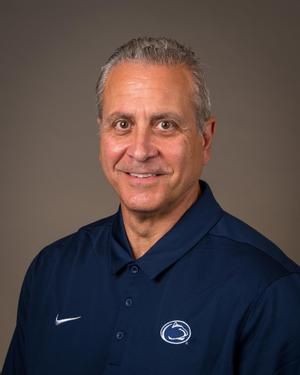News
Article
Sports Medicine Doctors: Managing Care Beyond the Pitch
Author(s):
With the fall sports season in full swing, sports medicine doctors will be called on to man the sidelines and athletes’ overall health.
Every week in the United States, millions tune into television broadcasts of their favorite teams playing football, baseball, basketball, and many more sports at both the professional and collegiate levels. To keep the sports going, it takes work behind the scenes to keep athletes healthy. Sports medicine doctors work to provide comprehensive physical and mental health care to keep athletes at their top form. With the bulk of sports seasons starting in the fall, the work of sports medicine doctors is ramping up with it. Handling long-term injuries, chronic illnesses, and recovery periods are all in a day’s work for sports medicine doctors, and their work serves as the most visible result of managing care in patients.
What Exactly Is Sports Medicine?
Sports medicine doctors are primarily known for being on the sidelines of sporting events on the professional, collegiate, and high school levels to ensure that someone is on hand to treat injuries. However, sports medicine is not simply about being on the sidelines.
Wayne Sebastianelli, MD | Image credit: Penn State Athletics

“Sports medicine is really applying medical principles, both from a primary care perspective and an orthopedic perspective, and applying it to competition and trying to find the balance between exclusion and continued participation in a safe manner,” said Wayne Sebastianelli, MD, director of athletic medicine at Penn State University and an orthopedic surgeon at Penn State Health. “Sports medicine sort of has 2 branches to it: It’s got a primary care side and an orthopedic side. A lot of times it’s a dyad of providers who take care of teams.”
Medical students who are looking to specialize in sports medicine need to go through a 1- to 2-year fellowship after residency to receive the extra training needed for the job, according to Jason Womack, MD, head team physician for Rutgers Athletics and program director of the Rutgers–Robert Wood Johnson Sports Medicine fellowship.
“A sports medicine physician is someone who has extra training in the medical needs of the athletes. That involves a lot of musculoskeletal care…and other types of sports-related injuries, such as concussion, exercise-induced asthma, or how illnesses and other common medical problems may affect sports,” he said.
Womack, who specializes in primary care, said that his work also includes caring for their non–sports-related needs, including mood disorders and illnesses, both chronic and temporary. Caring for these illnesses, said Sebastianelli, could include making sure someone with asthma has their inhaler during and before competition or monitoring a diabetic’s blood sugar.
Sebastianelli, as an orthopedic doctor, primarily focuses on how to care for these types of injuries.
“If it’s an orthopedic malady, like a simple thigh contusion, do we apply a compressive wrap, medication, ice, or just exclude them completely because it’s becoming too swollen or painful?” said Sebastianelli, in reference to how orthopedic sports medicine doctors go about treating their patients.
Day-to-day treatment of athletes can vary by the level of sports the player is participating in, said Womack and Sebastianelli. For example, high school sports may only have a trainer on hand and will have to refer athletes to an outside source for orthopedic care. In contrast, Rutgers and Penn State are more integrated and have both types of doctors caring for the athletes and on the sidelines at all times.
“You become involved in sort of their preadmission into the university, in the sense of getting their medical records, getting any past history, any past procedural history; you try to screen through all of that to make sure we get the appropriate records that are necessary to follow up with that, whether it’s x-rays or MRI scans or…echocardiogram or an EKG [electrocardiogram],” said Sebastianelli.
“At Rutgers, we’re very fortunate because Rutgers allows us to have an office on site inside their practice facilities and they support that both financially and also just with space and time to be with athletes,” said Womack. “We have the opportunity to see athletes on a day-to-day basis for all of their problems; they have access to us and we’re in an office that’s private that other patients cannot access.”
Jason Womack, MD | Image credit: Rutgers Athletics

Womack said a regular day could consist of seeing injured athletes, athletes dealing with chronic medical issues, such as depression and attention-deficit/hyperactivity disorder, and athletes who maybe contracted a new illness. Dieticians and psychologists are also consulted as part of an overall care system.
“We look at athletes oftentimes, particularly with high-risk sports, they may be seen multiple times in a training room during a season. You sort of have the ability to become involved with their general well-being, whether it’s their mental health or their management of chronic diseases. So, sports medicine is involved in a very complex, very integrated way,” said Sebastianelli.
On the Field: How Physicians Plan For and Treat Emergency Injuries
Sports medicine doctors are perhaps best known for being on the sidelines of sporting events. Be it college football or high school soccer, a sports medicine doctor is present for emergency injuries and helping students treat lingering injuries as they take the field. A lot goes into making sure they are prepped for treating injuries, both big and small, when it comes to game day.
Both doctors said that an emergency action plan for injuries on the field is established by the staff at an annual meeting.
“At Rutgers, we have a large meeting every year where all the trainers get together and we discuss our emergency action plan, how we’re going to do things, any changes from the years before,” said Womack. “We usually do those types of meetings with our local EMS.”
“We have an emergency action plan for every facility… So whether it’s Beaver Stadium or the Bryce Jordan Center or Pegula Ice Arena, every site has a manual that describes where the phones are, where the AEDs [automated external defibrillators] are, where ambulance access would occur,” said Sebastianelli.
The plan is refined each year to update everyone on any changes to structure or even to routes into the facilities due to construction. Sebastianelli said that Penn State staff plans for emergencies both on the field and in the crowd due to how many people gather at Beaver Stadium for each football game. State College becomes the third largest city in Pennsylvania on game day, according to him, which makes safety all the more vital. This includes Penn State providing their own medical staff for the opposing team, he says, to make sure there’s no confusion on the field in terms of where to go and what to do.
With the recent media coverage of athletes suffering cardiac events during sports, notably Damar Hamlin of the Buffalo Bills1 and Lebron James’ son Bronny James,2 Womack pointed out that sports medicine doctors have been prepped to handle these issues for years.
“There’s plenty of examples of sudden cardiac events that occur annually and happen multiple times annually. So it’s something that we have years and years of always being prepared for… And then we always keep trying to refine it to do better,” he said.
Both Sebastianelli and Womack said that sports medicine doctors keep equipment on hand, be it AEDs, splints, equipment to start intravenous lines, or crutches, to make sure they’re prepared for any injury that occurs during a sporting event.
“We communicate and practice spine boarding before the season starts, before we start having live practices and so forth, whether it’s ice hockey, football, or gymnastics where there’s a high risk for head and spine injury,” said Sebastianelli.
The treatment after the injury is just as important to the doctors as getting the athlete out of the event safely. Sports medicine also encompasses getting athletes back to their sport as quickly and safely as possible. Womack said that although recovery times haven’t considerably changed, the access to athletes’ recovery through social media has become more common, making people more aware of how athletes are progressing each month of their injury.
“I think that the recognition of injury, the processes for caring for injury, now are going more quickly so you might be able to get somebody [and] know how to rehab them right away,” said Womack. “When you recognize the injury, you can get the imaging that they need, you can get them their surgical evaluation, and then they’re kind of ready and prepped for surgery sooner than maybe some have been before.”
Sebastianelli also talked about how the access to improved technology and to the athlete’s recovery has put unrealistic expectations on recovery at times. For example, some expect a recovery time of 4 or 5 months where 9 to 12 months are needed. Our genetics, he said, haven’t changed. However, doctors now have tools to measure if an athlete is at pre-injury capability.
“We have ways to do that with functional testing, jump hopping, testing for knee injuries, amount of weight that they can lift, the amount of torque that they generate when they jump off a force plate,” said Sebastianelli. “You can sort of see where they were pre injury vs post injury because we measure that on everybody when they come in.”
Sebastianelli said the goal for each athlete is different, giving the example that an NFL player at 80% of his pre-injury self after an injury shouldn’t be playing soon but a baseball player who is at 80% may be able to play in the minor leagues to work themselves back up.
“It’s about tapering their activity to the level that they’re capable of going in. It doesn’t necessarily mean complete shutdown; it’s trying to design the return based on what levels of competition are available to rehab in and what type of drills they can participate in,” he said.
Sports Medicine Goes Beyond the Sidelines
For both doctors, sports medicine is about more than just sitting on the sidelines. Both of them focused on the multifaceted nature of sports medicine and how much calculation goes into making sure that athletes are at their healthiest both on and off the field.
“I think when people hear sports medicine, they just think, ‘Oh that’s really cool, you get to stand on the sidelines.’ And the reality is, you’re standing on the sidelines and you’re calculating in your head and planning for an emergency and planning to make sure that your athletes are healthy and going to be well taken care of,” said Womack.
He added that the most important aspect of sports medicine to him is getting medical care to an age group that doesn’t visit a doctor often.
"People aged of 15 to 30 generally don’t go to the doctor but have medical issues. And sometimes the only access you get to that population is when they come in for their sports physical or that injury,” he said.
Sebastianelli emphasized that not every athlete is the same, even if they have the same injury, due to things like mental health issues, family issues, or comorbidities. So multiple people have to discuss and try to come up with the best outcome for an athlete.
“It’s multispecialty. It’s not just orthopedic surgery, it’s not just primary care. But more important, it involves the integration of health care across a lot of disciplines,” said Sebastianelli.
References
1. Maaddi R. Explainer: what happened to Damar Hamlin? Associated Press. January 3, 2023. Accessed September 14, 2023. https://apnews.com/article/bills-damar-hamlin-collapse-what-happened-d73a76f2f7f736b652e95896dfaa0900
2. Harris B. Bronny James has a congenital heart defect that caused his cardiac arrest, a spokesperson says. Associated Press. August 25, 2023. Accessed September 14, 2023. https://apnews.com/article/bronny-james-cardiac-arrest-3953eee8789e83f3cccfb6dd798bc54e





